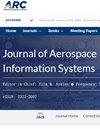神经形态结构的辐射致噪声弹性
IF 1.5
4区 工程技术
Q2 ENGINEERING, AEROSPACE
引用次数: 0
摘要
基于神经形态事件的网络使用异步时间相关信息从输入数据中提取特征,这些特征可以用于基于边缘的分布式应用程序,如对象识别。这种网络的抗噪声特性,特别是在空间应用的背景下,还有待探索。本文利用一种神经形态算法——时间曲面层次(HOTS)算法来理解神经形态网络中最小和最具弹性的模块。HOTS算法依赖于时间曲面的计算,它将相邻像素之间的时间延迟映射为归一化特征,这涉及许多计算,这些计算也在其他神经形态网络中发现,如指数衰减、距离计算等。我们在Digilent PYNQ板和Xilinx Zynq 7020芯片上实现了HOTS,并在Los Alamos中子科学中心对运行HOTS网络推理的板进行了中子辐射测试。此外,我们使用之前在基于事件的传感器上进行的类似实验中的模拟模型来创建中子诱导噪声模型,以量化该噪声对网络整体性能的影响。该实验为HOTS算法的可靠性提供了初步测量,并提出了在未来航天器任务中创建更可靠的HOTS体系结构的方法。本文章由计算机程序翻译,如有差异,请以英文原文为准。
Radiation-Induced Noise Resilience of Neuromorphic Architectures
Neuromorphic event-based networks use asynchronous time-dependent information to extract features from input data that can allow for edge-based distributed applications such as object recognition. The noise resilience properties of such networks, especially in the context of space applications, are yet to be explored. In this paper, we use the hierarchy of time surfaces (HOTS) algorithm, which is one of the neuromorphic algorithms, to understand the least and most resilient modules in a neuromorphic network. The HOTS algorithm relies on the computing of time surfaces that maps the temporal delays between neighboring pixels into normalized features that involve many computations that are also found in other neuromorphic networks such as exponential decays, distance computations, etcetera. We implemented HOTS on a Digilent PYNQ board with a Xilinx Zynq 7020 system on a chip, and we subjected the boards running the HOTS network inference to neutron radiation at the Los Alamos Neutron Science Center. Furthermore, we used simulation models from our previous similar experiments on the event-based sensor to create a neutron induced noise model to quantify the effect of this noise on the overall performance of the network. This experiment provides the preliminary measurements of the reliability of the HOTS algorithm and proposes methods to create a more reliable HOTS architecture in future spacecraft missions.
求助全文
通过发布文献求助,成功后即可免费获取论文全文。
去求助
来源期刊

Journal of Aerospace Information Systems
ENGINEERING, AEROSPACE-
CiteScore
3.70
自引率
13.30%
发文量
58
审稿时长
>12 weeks
期刊介绍:
This Journal is devoted to the dissemination of original archival research papers describing new theoretical developments, novel applications, and case studies regarding advances in aerospace computing, information, and networks and communication systems that address aerospace-specific issues. Issues related to signal processing, electromagnetics, antenna theory, and the basic networking hardware transmission technologies of a network are not within the scope of this journal. Topics include aerospace systems and software engineering; verification and validation of embedded systems; the field known as ‘big data,’ data analytics, machine learning, and knowledge management for aerospace systems; human-automation interaction and systems health management for aerospace systems. Applications of autonomous systems, systems engineering principles, and safety and mission assurance are of particular interest. The Journal also features Technical Notes that discuss particular technical innovations or applications in the topics described above. Papers are also sought that rigorously review the results of recent research developments. In addition to original research papers and reviews, the journal publishes articles that review books, conferences, social media, and new educational modes applicable to the scope of the Journal.
 求助内容:
求助内容: 应助结果提醒方式:
应助结果提醒方式:


